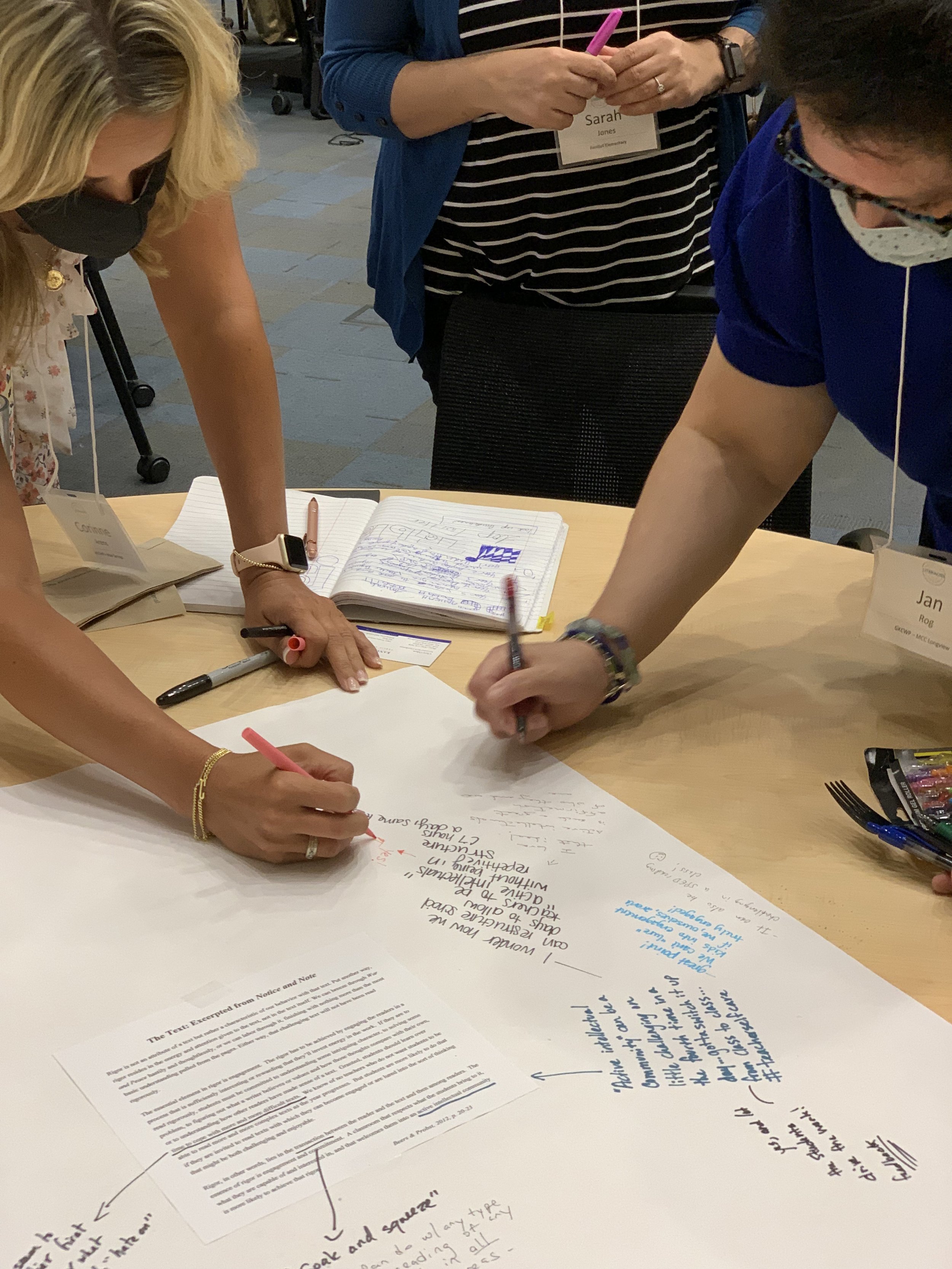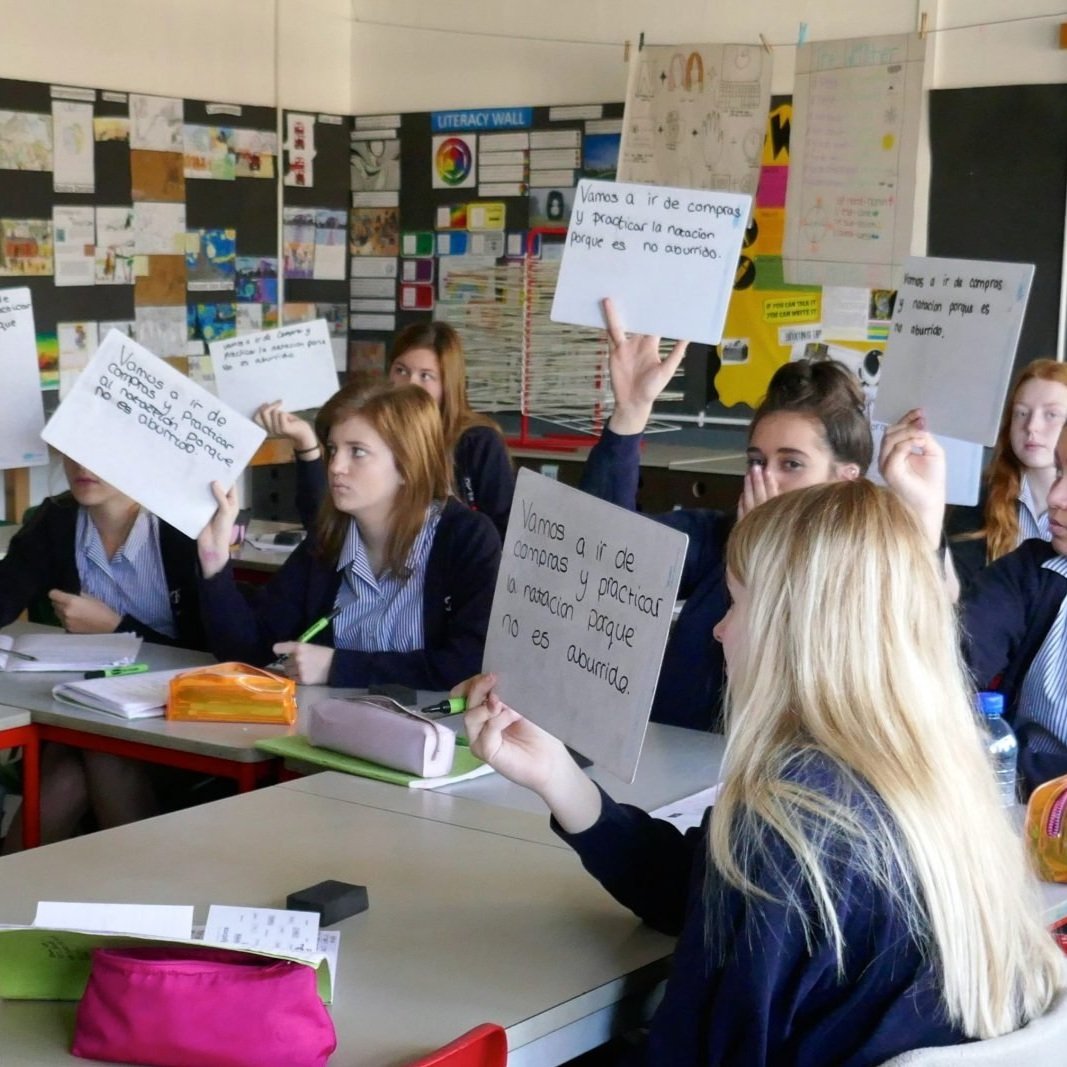
Resources
Family and Community Literacy
Family and community literacy initiatives recognize the literacy practices that already exist among families in their homes and community settings as part of many everyday activities.
Close Reading
Close reading involves critically analyzing and evaluating texts. Modeling, reading guides, and class discussions can scaffold students' close reading of texts. In order to ask questions that help deepen students' experiences with texts and learn from texts, we must examing the question and answer relationships and use that knowledge to design text-dependent questions that can guide students to close read.
RECIPROCAL TEACHING
Reciprocal teaching is a literacy learning strategy that aims to improve students' reading comprehension skills. It involves a structured and collaborative approach where students take on the role of both the teacher and the learner.
WORD STUDY
Word study is exploring reading at the word level, and includes building knowledge of how words work, knowledge of word parts, knowledge of word meanings, and word learning strategies.
READING AND THE BRAIN
There is a growing body of research from the field of neuroscience on reading. This research has pointed to the role of executive function in reading (Duke & Cartwright, 2021; Paris & Block, 2015). function issues can be a major factor contributing to reading difficulties.
CRITICAL LITERACY
Critical literacy approaches reading, writing, speaking, listening, viewing, visually representing, inquiring, thinking, and acting from a critical frame. Students are taught to question the credibility of claims and assess bias in texts they read and view.
INTEGRATED LITERACY INSTRUCTION
Integrated approach to literacy means that reading, writing, speaking, listening, language, visually representing, and thinking cannot be separated out. All are related, and integrating our teaching shows positive results.
During Reading Strategies
This approach give students a toolbox of strategies that they can apply strategically. Research has shown that this approach, called transactional strategy instruction, improves students' reading comprehension
Before Reading Strategies for Secondary Students
learning about cognitive strategies to use before reading to set secondary students up for success during reading.
Digital Literacy
Digital literacy involves reading eBooks and acquiring information through the internet. Digital literacy requires foundational reading skills as well as knowledge about digital text structures and online research.
Teaching of Writing in Secondary Schools
Writing is essential to learning, critical thinking, and active citizenship. Writing is the currency of the new workplace and global economy, but more importantly, writing helps us clarify ideas, solve problems, and understand ourselves and our changing world.
Providing Feedback on Student Writing
One way to provide feedback to students about their writing is to use the Flash Feedback method by Matthew Johnson
Explicit and Systematic Literacy Instruction
With explicit instruction, teachers clearly and directly identify the skill, strategy, or concept to be learned and teach in an unambiguous and structured way (Archer & Hughes, 2011). Research shows that students need explicit literacy instruction that is interactive, engaging students in thinking, writing, and discussion.
What the Cognitive Research says about Reading
Reading is an interactive process involving many components and different parts of the brain.
Timeline of Scientific Research on Reading
Investigating the components of reading and investigating how to teach reading are two different areas of research. Exploring the components of reading is basic research, while exploring how to teach reading is applied research. Over time both basic and applied research continue to shed increasing insight into the complexity of reading.
Learning from Exceptional Teachers
Teaching reading cannot be decontextualized or scripted. Quite the opposite! Research shows that teaching reading should be an orchestrated act (Duke et al., 2018) of motivational, managerial, curricular, environmental, and instructional practices that make learning responsive, meaningful, and culturally relevant.



















